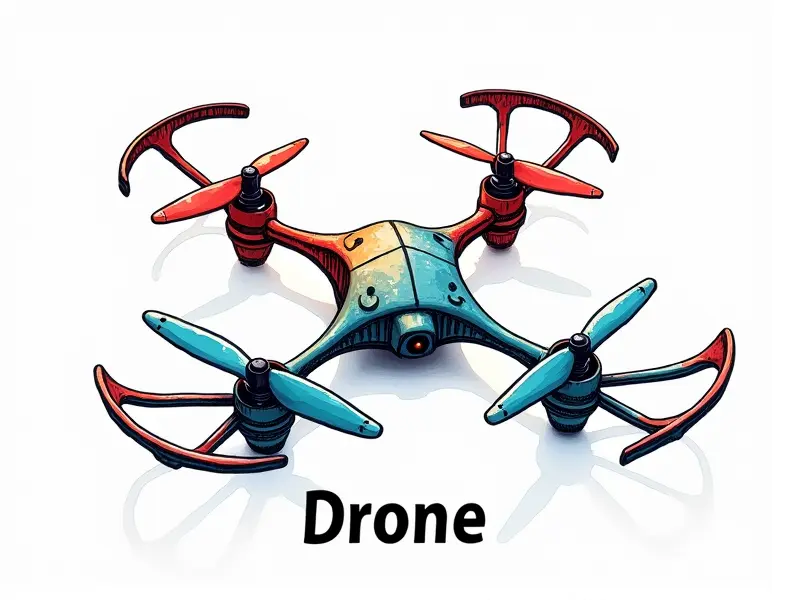How to paint an RC plane?

Quick Tips for Perfect RC Plane Paint Jobs
Painting your remote control (RC) plane is a fantastic way to personalize and enhance its appearance. Whether you're aiming for a realistic military paint scheme or a vibrant, eye-catching design, these tips will help ensure your project turns out perfectly:
- Choose the right type of paint: Select acrylic enamel or water-based paints designed specifically for RC models.
- Prepare the surface: Clean and sand the plane to remove any dust, oil, or residue. Apply a primer if necessary.
- Masking: Use high-quality tape and masks to protect areas you don't want painted.
Step-by-Step RC Plane Painting Tutorial
Fine-tune your skills with this comprehensive guide on how to paint an RC plane. Follow these steps for a professional finish:
- Clean and sand the surface: Ensure the model is free from dirt, oil, or fingerprints.
- Apply primer: Use a thin coat of primer to seal the surface and provide an even base for paint.
- Masking: Carefully mask off areas that should remain unpainted using high-quality tape and masks.
- Paint application: Start with light coats, allowing each layer to dry completely before applying the next.
- Finishing touches: Once all paint has dried, carefully remove masking tape and inspect for any imperfections.
Top Tricks for Stunning RC Plane Designs
Showcase your creativity with these design ideas that will make your RC plane stand out:
- Military schemes: Replicate authentic military paint patterns and insignias for a realistic look.
- Vintage designs: Capture the classic aesthetics of early aviation models to add historical charm.
- Custom graphics: Incorporate unique logos, names, or artwork that reflect your personal style.
Fast and Easy RC Plane Decal Application
Add intricate details with decals. Here’s how to apply them seamlessly:
- Select the right decal sheet: Choose high-quality sheets designed for RC models.
- Prepare the surface: Ensure the area is clean and free from oils or dust.
- Apply decals: Use a water slide method, carefully placing each decal in its designated spot.
Mastering RC Plane Camouflage Patterns
Create authentic military camouflage patterns with these detailed steps:
- Research: Study real-life camouflage schemes to understand the layout and colors.
- Masking: Use fine masking techniques to create precise lines and shapes.
- Layering: Apply multiple layers of paint, allowing each layer to dry before applying the next.
D.I.Y. Guide: Painting RC Planes at Home
Transform your home workshop into a professional painting station with these tips:
- Proper lighting: Ensure you have adequate light to see fine details clearly.
- Ventilation: Work in a well-ventilated area or use an exhaust fan to avoid inhaling fumes.
- Ergonomic setup: Arrange your workspace for comfort and efficiency, with all tools within easy reach.
Beginner's Guide to RC Plane Airbrushing
Airbrushing provides a smooth, professional finish. Here’s how beginners can get started:
- Select the right airbrush: Choose an airbrush suitable for small-scale models.
- Practice techniques: Start with simple lines and shapes to build your skills gradually.
- Maintain equipment: Regularly clean and maintain your airbrush for consistent performance.
How to Custom Paint Your RC Aircraft
Bring your vision to life by custom painting your RC aircraft. Follow these steps:
- Conceptualize the design: Sketch out your ideas on paper before applying them to the model.
- Select colors and materials: Choose paints, decals, and other supplies that align with your concept.
- Execute the design: Paint in layers, adding details gradually until you achieve the desired effect.
Best Practices for RC Plane Coating
Maintain a pristine finish by adhering to these coating practices:
- Clean regularly: Keep your model clean and free from dust and oils.
- Protective coatings: Apply clear coats or sealants to protect the paint job.
- Avoid harsh chemicals: Use mild cleaning agents that won’t damage the finish.
Quick Guide to Painting RC Planes
Simplify your painting process with these quick tips:
- Start small: Begin with simple color schemes and gradually work up to more complex designs.
- Practice patience: Allow each layer of paint to dry completely before moving on to the next step.
- Experiment: Try different techniques and materials to find what works best for you.
Easy Techniques to Paint Your RC Plane
Learn these simple yet effective painting methods to enhance your model’s appearance:
- Base coat: Apply a solid base color first, then add details and accents on top.
- Layering: Build up the paint gradually in thin layers for better control and coverage.
- Masking: Use high-quality tape to create sharp edges and clean lines around painted areas.
Conclusion
Painting your RC plane is a rewarding hobby that allows you to express creativity while enhancing the model's appearance. By following these tips, tutorials, and techniques, you can achieve professional results at home. Whether you're aiming for realistic military schemes or custom designs, the possibilities are endless with the right tools and skills.

